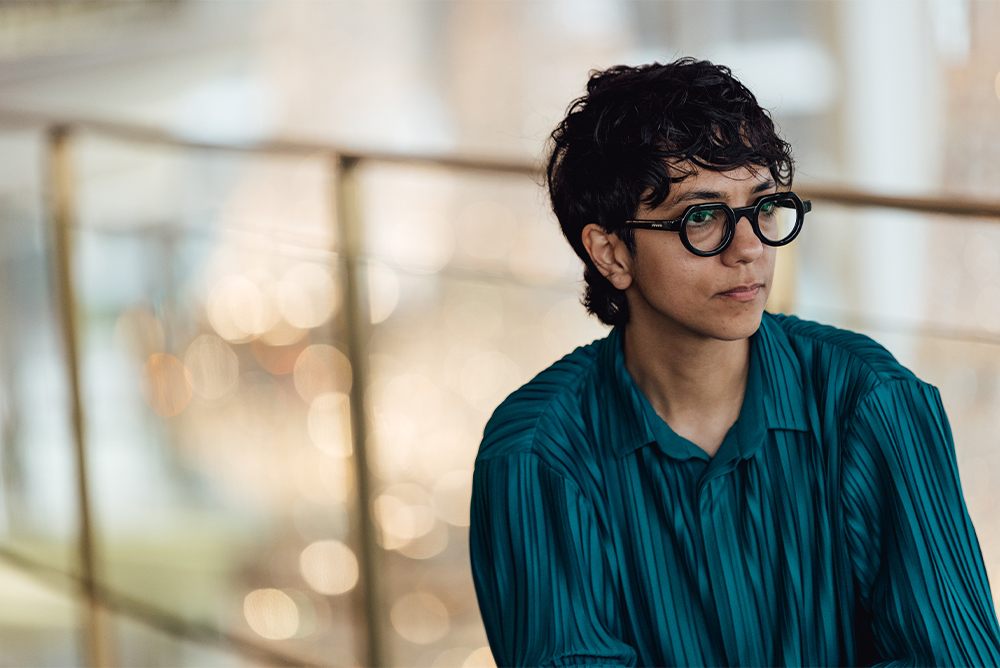
Photo by Chad Brady.
Gelare Khoshgozaran is an artist and writer whose work engages with the legacies of imperial violence manifested in war and militarization, borders, and archives. Before joining us for this week’s Zócalo/The Music Center conversation, “How Is Art A Weapon in War?,” presented at Jerry Moss Plaza in downtown Los Angeles, she joined us in the green room to chat dreams, nostalgia, and perrhijos memes.
What draws you to dreams in your own work?
I think it’s both the potentials and possibilities that this irrational world that I have no control over might offer in terms of imagining situations, images, sounds, feelings, but also as some kind of guideline for making a moving image.
What’s your favorite place to go in Los Angeles?
I really like walking in Mount Washington. And looking over the hills.
What do you think is the most subversive spot in Los Angeles?
MacArthur Park. Because it’s not as controlled as the rest of the city. It’s very homey to me in its chaos, and its liveliness, and all the street vendors and the noise and all the movement, public transit, and businesses. I really like that place.
What’s the last film you saw that you loved?
I’ve been watching this film, Talking About Trees. It’s about a group of Sudanese filmmakers who are trying to revive a cinema space for the community. It’s a documentary with a little bit of reenactment. It’s very beautiful.
You’re an artist, writer, and translator. What to you is the mark of a good translation?
A good translation is one that reads well. But also makes you question how would this be said in another language. It’s one that makes you think about translation, it doesn’t erase that part.
What’s that last piece of pop culture that caught your eye?
The Childish Gambino video “This Is America” was probably one of the last things that I watched. And it was like, this is a new way of making and thinking and looking at things as a mainstream-ish production.
What’s a non-mainstream work that’s caught your eye?
A lot. I guess that’s why I’m an artist. But there’s a Syrian filmmaker that I’ve been returning to, Mohammad Malas. He has this film called The Dream. The way that he uses the documentary format, but in a very self-reflexive way, and interviews a number of Palestinians in different camps, in different villages, and asks them about their dreams and the way that he edits the film is really incredible.
What’s something that makes you nostalgic?
When it gets gray and cloudy in L.A. It makes me nostalgic but not in a heavy way. In a really good way in that there is a longing but also I feel at home and I want to do things, as opposed to the sun that’s kind of alienating to me. I’m that anomaly.
What’s one piece of internet culture that you’re enjoying?
I’ve been enjoying a bunch of memes. There’s this Latino account that posts perrhijos [memes that are about] people, mostly millennials, who raise dogs as their children. I really identify with that.



